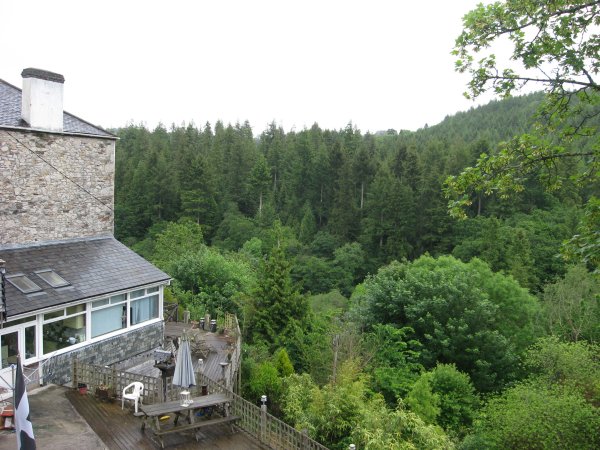|
|
|
From the Thames we move to the Tamar; from the river representing the apparent essence of England to the one which is widely held (at least by people living west of it) to form its South-Western border. The Tamar flows between Devon and Cornwall and in order to maximise the distinction between them its broad, muddy, fast-flowing form spends most of its time, River Wye style, at the bottom of a very deep and steep-sided valley. Accordingly the Tamar is out of view in this picture, being another 100-odd feet down the hill amongst the trees. The great brown-green greasy Tamar River, all set about with ash trees, is at this point engaged in passing the village of Gunnislake. Gunnislake is home to the lowest conventional bridge across the river - a rather neat little stone arched structure with a vintage of 700-odd years perhaps inevitably called New Bridge. Below here, the waterway can be crossed by the splendid concrete-arched railway viaduct at Calstock, the tall Tamar Bridge which carries the A38 into Cornwall, the Royal Albert Bridge which grandly fulfils the same function for the Great Western mainline to Penzance and the Torpoint chain ferry which has to be closed for the chains to be removed whenever a Royal Navy submarine needs to visit Devonport Dockyard for repairs. It rains a fair bit in the Tamar Valley and was busy drizzling when this picture was taken, but that perhaps emphasises the splendour of the giant rockeries which stand out from the trees on the Devon bank of the river and overlook Gunnislake. Just here the tall pine trees gazing across the ravine attempt to marvel the Scottish Highlands. The air is clear, the ground is fresh and if it all gets too wet you can either admire the views from one of the local pubs or retire back to the train to Plymouth, which will carry you sedately through the trees, along cliffs and over Calstock Viaduct. As you potter southwards down the remarkably busy and quite unique 20mph anachronism that calls itself a railway, it is interesting to reflect that the Gunnislake branch was once operated by the same company as owned London Waterloo station - and which would occasionally retire former Waterloo commuter locomotives down here to eke out their remaining days (or, more precisely, the next 40 years) on the relaxing 1-in-40 gradients. Gunnislake itself is of course some little way from its railway station. A sweet place where an industrial village centre is crammed in on a steep hill, its modern green surroundings hide the fact that you do not have to go far from the main road to find mineshafts, factory chimneys, abandoned tramways and derelict limekilns. The main road through the village is the only decent one for miles, hence the railway, but the switchback nature of the area, the fact that New Bridge has never been widened and the lack of local population all mean that it is not as busy as it could be. |
